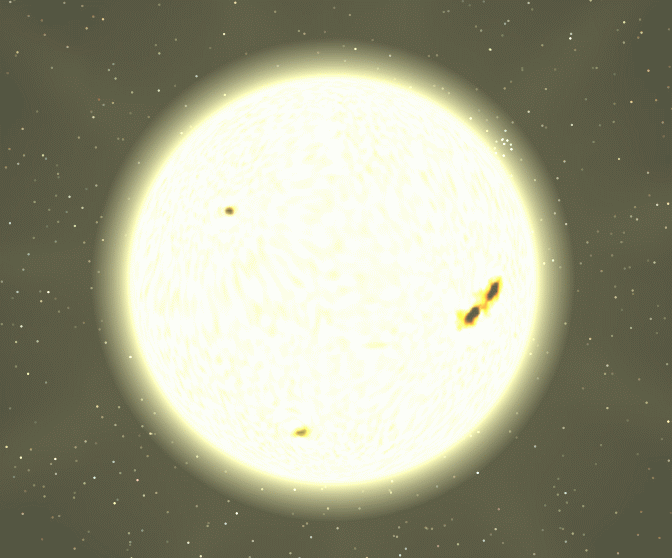
 Copyright © Michael Richmond.
This work is licensed under a Creative Commons License.
Copyright © Michael Richmond.
This work is licensed under a Creative Commons License.
You might think that there are a number of planets in our Solar System -- maybe eight, maybe nine, maybe lots -- but when it comes right down to it, the Solar System is MOSTLY the Sun:

Compared to the Sun, all the other bodies are tiny. For example, here's what Jupiter and the Earth (and Moon) would look like if placed next to the Sun:
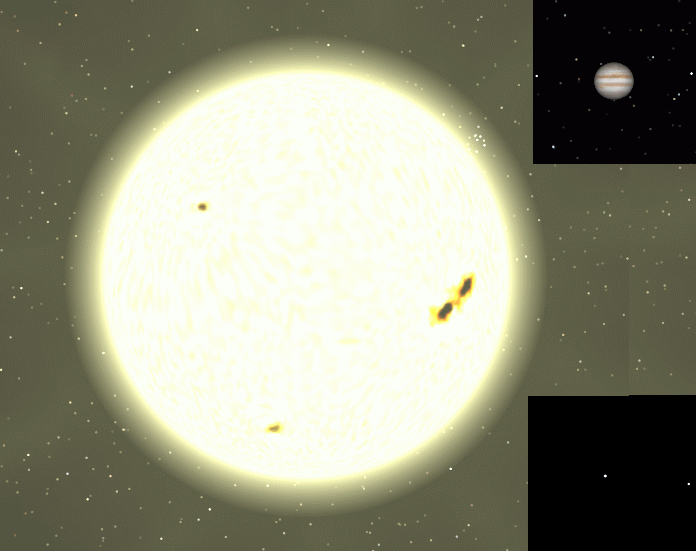
The only planet which makes much of a difference is Jupiter. It has more mass than all the other planets put together, and so the gravitational force between the Sun and Jupiter does have a signficant effect.
As a result of their mutual gravitational attraction, the Sun and Jupiter both circle around their center of mass.
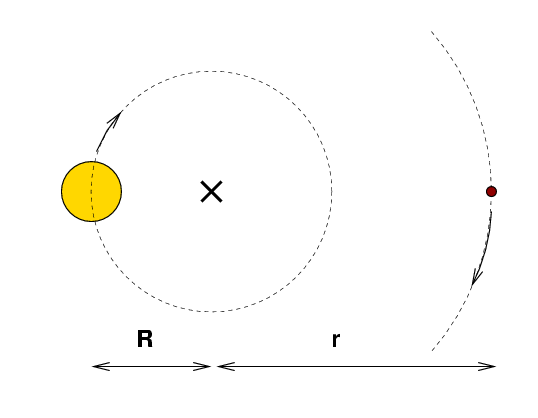
Hmmmm. Is it possible to measure the speed of a moving object without touching it?
Yes!
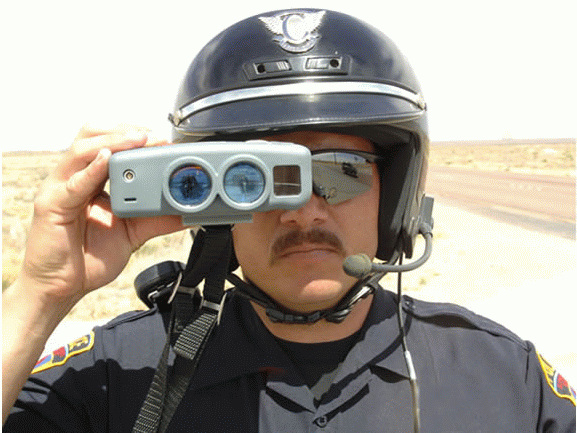
Image courtesy of
SpeedZones.com
Police officers bounce radio or visible light waves off cars as they zoom past. By measuring the frequency of the returning echo, and comparing it to the known frequency of the original signal, they can compute the speed of the car. The physical basis for the calculation is the Doppler shift of waves which are emitted by a moving source.
It turns out that you don't need a radar detector to measure the radial speed of a star. Stars come with built-in frequency indicators. If you shine the light from a star through a prism or diffraction grating, it will break up into a spectrum, so that you can examine the amount of light at each frequency.

The spectrum of a star like our Sun contains light of all frequencies and colors. But if you look closely, you'll see that at some frequencies, there is a lack of light -- what look like a series of dark lines at certain frequencies. These are absorption lines due to atoms of different elements in the Sun's upper atmosphere.
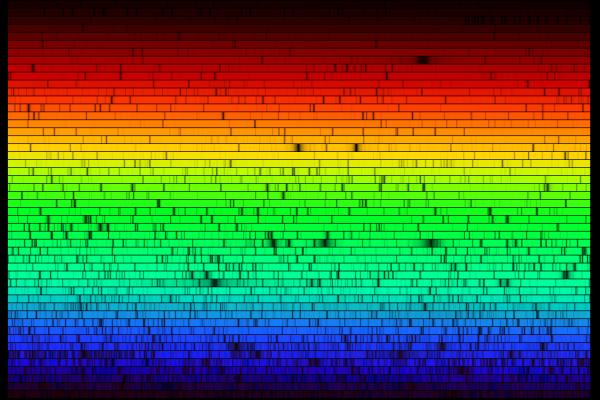
It is often convenient to take the picture of a spectrum like this:

and make a 2-D plot of intensity as a function of frequency or wavelength, like this:

On graphs like this, the dark lines appear as dips in intensity. We can measure the frequency (or wavelength) of the lines very, very accurately.
Each chemical element -- hydrogen, helium, carbon, iron, etc. -- produces a distinctive set of absorption lines. We know the exact frequency of each line from experiments in labs here on Earth. However, if the star happens to be moving, then we will observe all of its lines to be shifted:
For example, let's compare the spectrum of our Sun to that of the star Arcturus.
Q: Is Arcturus coming towards us, or moving away from us?
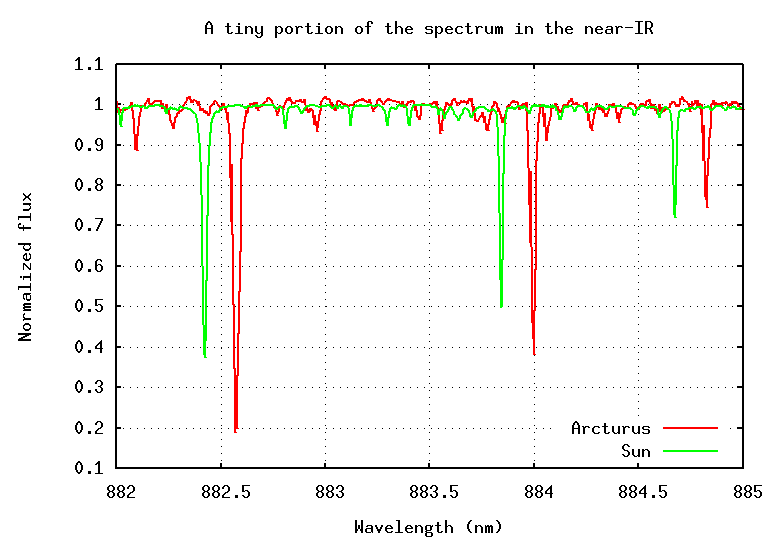
There's even a formula which relates the size of the shift to the speed of the star.
For more information
 Copyright © Michael Richmond.
This work is licensed under a Creative Commons License.
Copyright © Michael Richmond.
This work is licensed under a Creative Commons License.